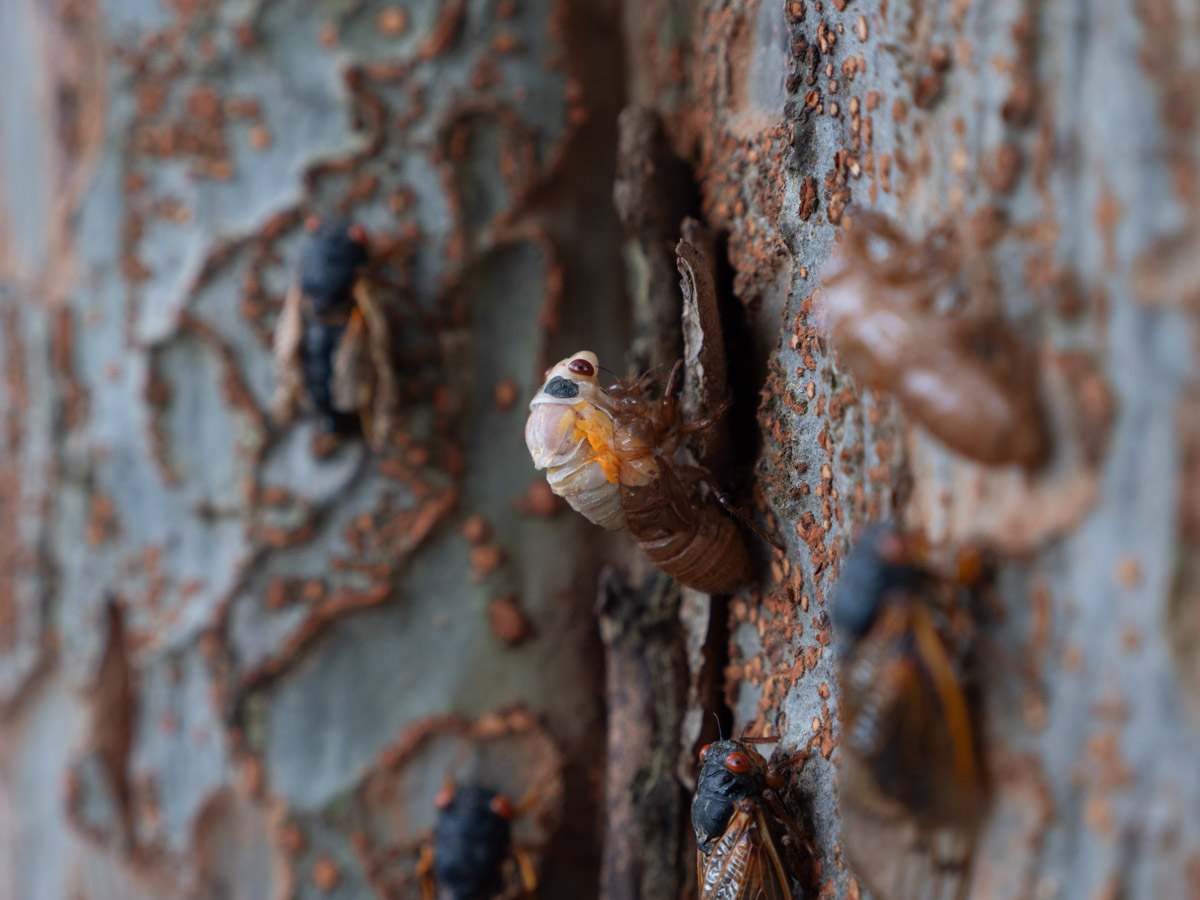Precautions
Before considering adding cicadas to your diet, it’s important to take certain precautions. If you have a shellfish allergy, you might also be allergic to cicadas due to the presence of tropomyosin, a protein found in both. While cicadas can be eaten raw, it’s safer to cook them to eliminate potential bacteria and environmental pathogens. Also, ensure you are gathering cicadas from areas free of heavy metals and other contaminants. If you wouldn’t forage plants in an area, it’s best not to collect cicadas there either.
Video edition
I created a full in-depth video version of this article that you can watch on my YouTube channel, “Feral Foraging” if you are interested!
Can you eat cicadas?
Yes, you certainly can eat cicadas! They are not only edible but highly nutritious and surprisingly delicious.
Why would you eat cicadas?
Cicadas contain over 55 grams of protein per 100 grams, which is more than chicken breast and double the amount in beef. They also have only 8 grams of carbohydrates per 100 grams, making them a low-carb protein source.
Additionally, eating cicadas offers us an opportunity to further connect and take part in our local wild ecology.
Is eating cicadas sustainable?
Absolutely, consuming cicadas is sustainable. The phenomenon of predator satiation means cicadas emerge in vast numbers, overwhelming predators and ensuring enough survive to perpetuate their species. Even if every person in an affected area partook, the impact on cicada populations would be minimal due to their breeding strategies.
In Missouri, for example, if every person ate 100 cicadas, it would still be a fraction of the population. Considering the estimated 11 trillion cicadas emerging, human consumption would amount to less than 0.005% of the total population.
Most places where cicadas emerge would be too difficult for humans to access. Further, by preferentially harvesting males, you can ensure that you are causing even less impact.
Males have a tiny bump at the base of their abdomen, but females have a thin dark line instead.
Where to find cicadas

To successfully find cicadas, focus on areas with deciduous hardwood trees where cicada nymphs thrive. Parks and landscaped areas often provide easier gathering opportunities, though it’s important to ensure you have permission to collect them.
Keep an ear out for their distinctive calls, which can lead you to areas with higher concentrations. During their emergence, look for small holes in the ground—these are signs of cicadas coming to the surface.
How to gather cicadas

When gathering cicadas, timing is crucial:
- Teneral Stage: The best time to collect cicadas is during their teneral stage, right after they molt when they are most tender.
- Container: Use a container with slick edges to gently brush cicadas into it without harming them.
- Male Preference: Focus on gathering male cicadas to minimize impact on the reproductive potential of the population. Male cicadas can be identified by the absence of an ovipositor (a line at the base of the abdomen) and are the only ones that make noise.
How to cook cicadas
For the best culinary experience, follow these steps:
- Boil: Begin by boiling cicadas to clean them and eliminate any pathogens. Parboil them for 1 to 1.5 minutes. (Stir them in immediately upon boiling, you may also elect to freeze them before adding them to the water if you prefer) You can freeze them after parboiling to use later
- Sauteé or Fry: After boiling, sauté or deep-fry the cicadas to achieve a crispy texture. Treat them like shrimp; season and cook them according to personal taste preferences.
FAQ
- Q: What do cicadas taste like?
Many describe the flavor as similar to shrimp, and that is my experience as well! If gathered at the right stage (the teneral stage), they will be nice and tender as well. - Q: How many cicadas emerge?
In an area with a brood emergence, depending on environmental conditions, as many as 1.5 million cicadas per acre can emerge. - Q: Can you eat cicadas raw?
I wouldn’t recommend eating them raw. They won’t taste as good, and it could introduce environmental pathogens. This article describes good methods for cooking them! - Q: Do cicadas taste good?
Yes, surprisingly so! The taste is often described as shrimp-like, and the texture of teneral stage cicadas is quite tender! - Q: Are there health risks to eating cicadas?
People with shellfish allergies should avoid consuming cicadas, but outside of that, there are few health concerns with eating properly harvested and prepared cicadas.




